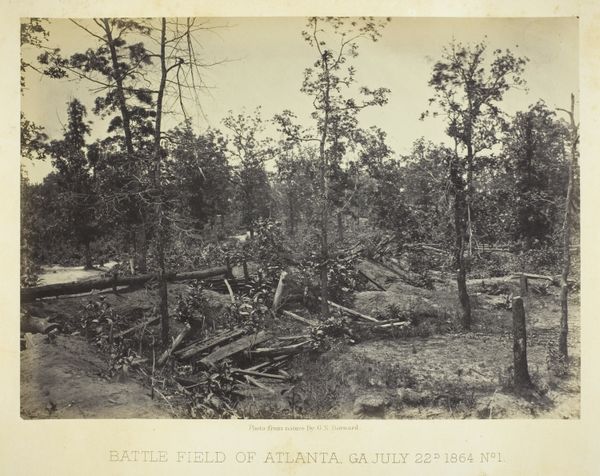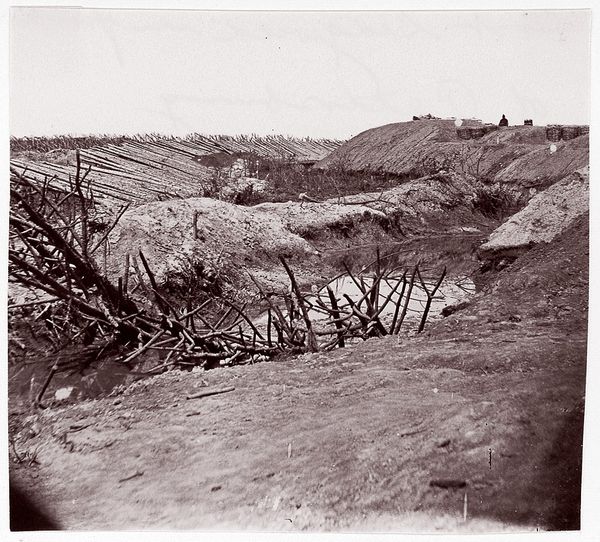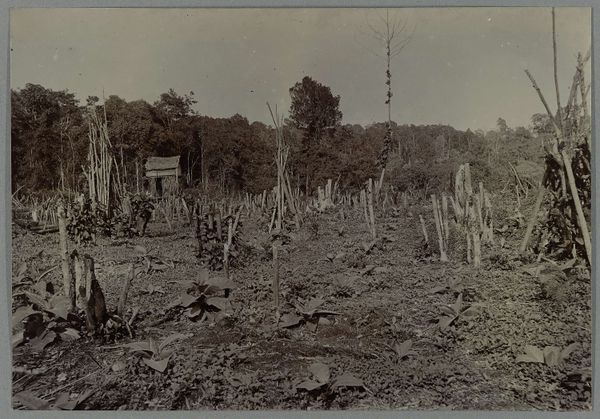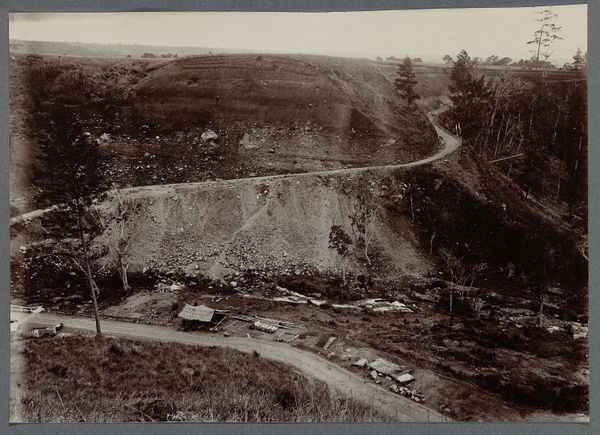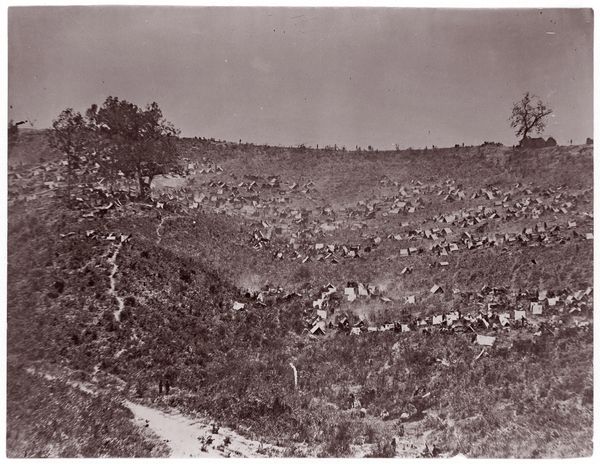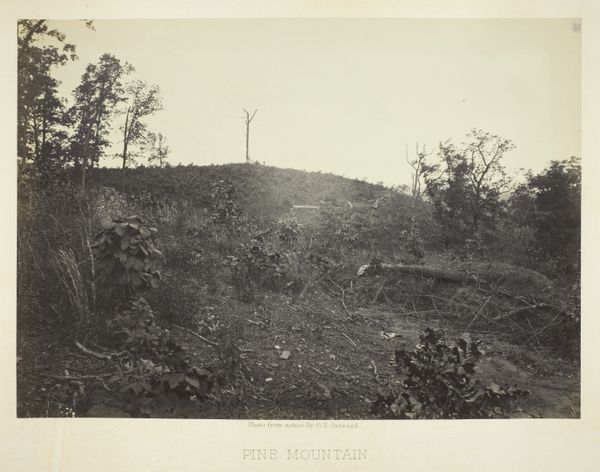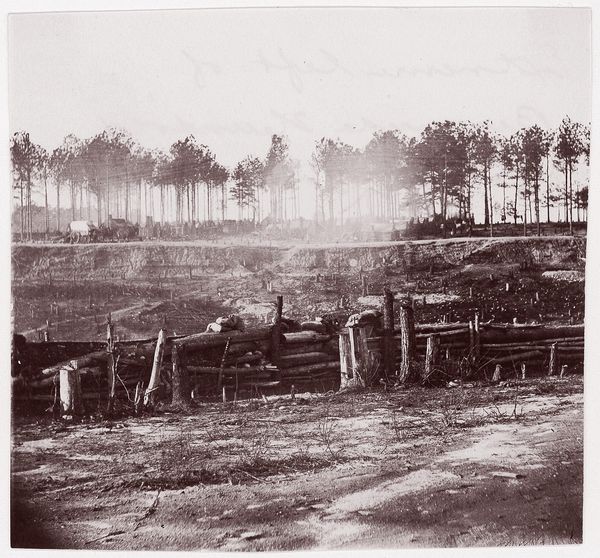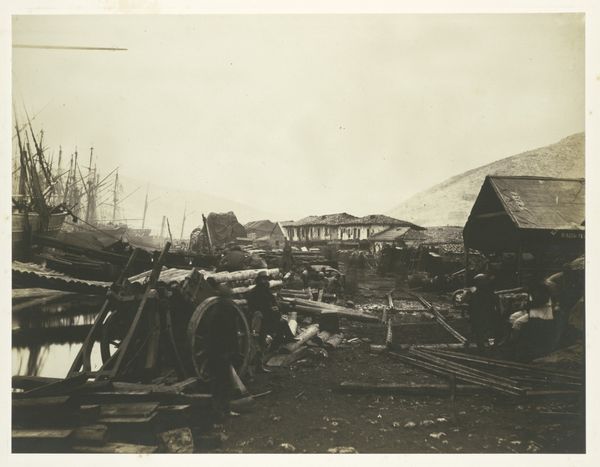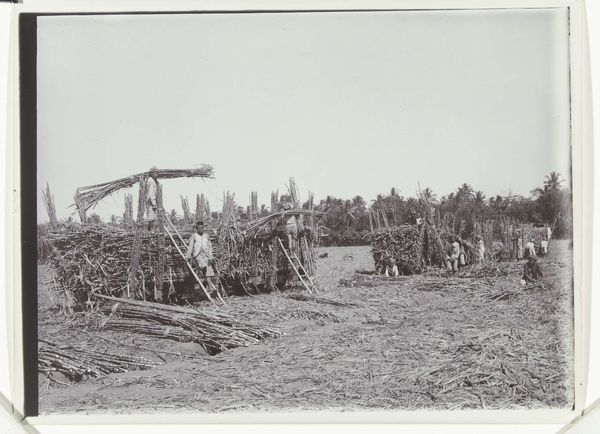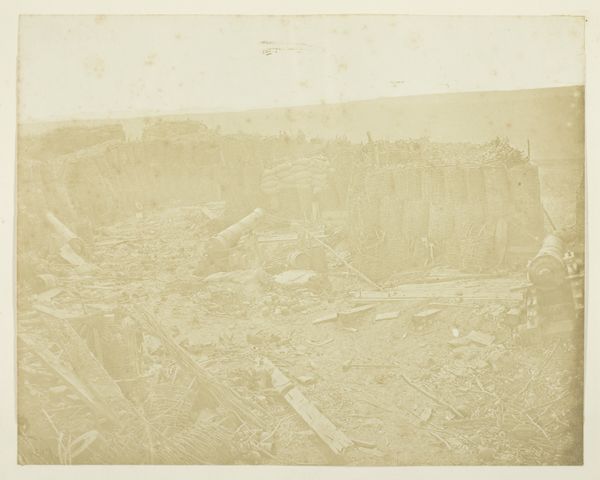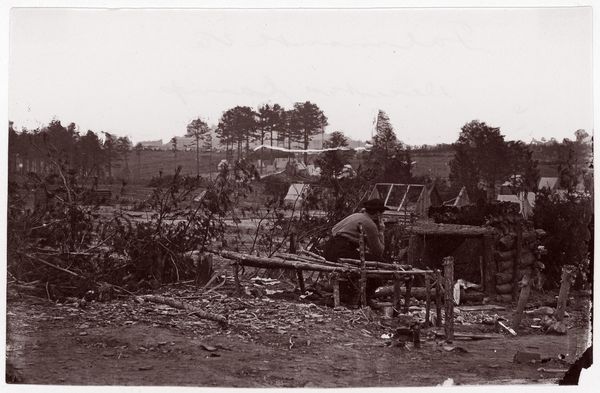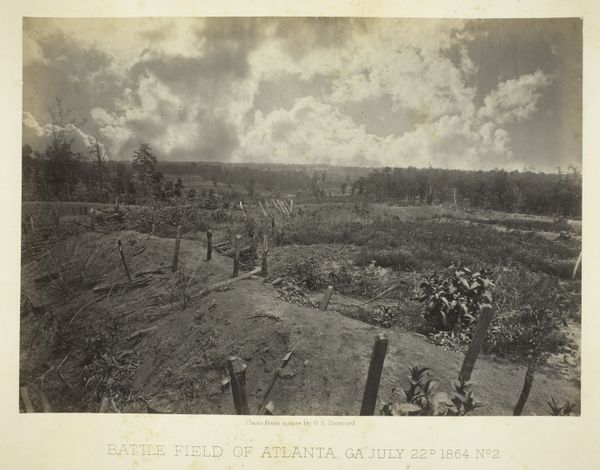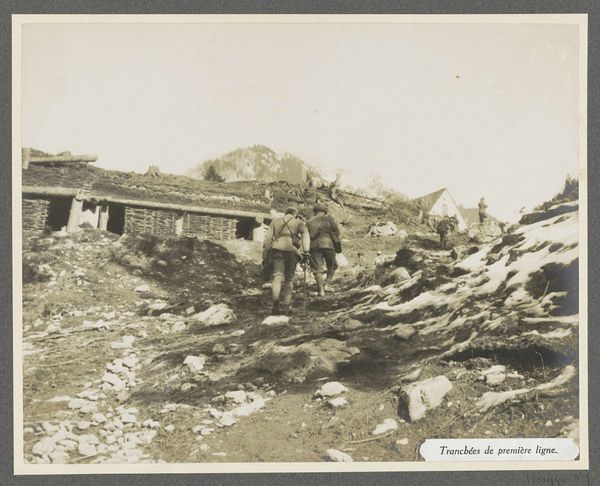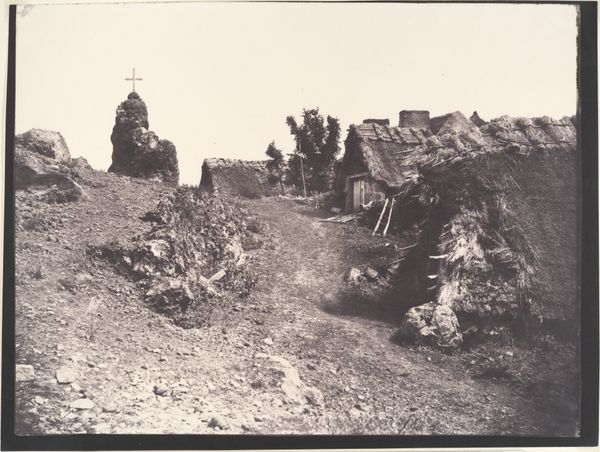
photography
#
landscape
#
photography
Dimensions: height 119 mm, width 164 mm
Copyright: Rijks Museum: Open Domain
Curator: This photograph, attributed to Hendrik Doijer and taken between 1903 and 1910, documents the digging of a new saltwater canal at Totness. Editor: It's stark. That broad expanse of upturned earth dominates the view. You see figures sparsely scattered, dwarfed by the scale of this industrial landscape. The raw materiality really hits you, the mud, the timber. Curator: Absolutely. Think about the sheer manual labor that went into this project. The photo captures a moment of intense manipulation of the natural landscape. The figures, possibly laborers, are actively transforming their environment, highlighting humanity's impact. What was it like to produce an image that portrays the backbreaking work with such stoicism? Editor: Exactly! It’s not just a pretty vista; it’s evidence of extraction. Look at the contrast between the cleared area and the remaining forest edge. This tension between nature and industry would’ve been part of a colonial agenda to exploit Surinamese natural resources. The photo seems to deliberately frame the shift from one state to the next as a matter of fact. It suggests not a disruption to local communities but an unquestionable fact of human "progress." Curator: The photo offers a window into the role photography played during the turn of the century, particularly within colonial contexts. Photographic records served as proof of work, of territorial claim, of infrastructure development... Editor: How these types of archival documents eventually were deployed in museum collections becomes key. Who was it initially meant to impress? What conversations did it spark in the media or in governing bodies when this scene would've still been taking place? Its very status as a ‘historical’ image flattens out all the very real-time disruptions it depicts. Curator: It forces us to consider the complex intersection of labor, the environment, and technological advancement—all presented through the seemingly objective lens of early photography. Editor: Precisely. This isn't merely a scene, but a visual testimony to a specific moment within larger systems of production and power, mediated, documented, and exhibited for a certain public. We’re reminded to always look critically at seemingly objective documents like these, to question what isn’t shown.
Comments
No comments
Be the first to comment and join the conversation on the ultimate creative platform.
